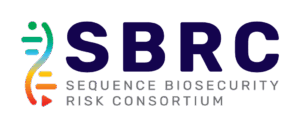Science-based DNA screening standards for global implementation
Challenge: A Lack of Global Standards for DNA Screening
With increasing nucleic acid synthesis capabilities, robust and consistent DNA screening standards are vital to prevent orders of sequences to create dangerous pathogens or toxins. Biosecurity measures for synthetic DNA rely largely on voluntary screening by synthesis providers, with no global mechanism to evaluate the quality or consistency of these screening systems for their ability to flag SOCs. Furthermore, current nucleic acid screening standards are globally fragmented, with inconsistent definitions of what is deemed to be SOCs.
Both synthesis providers and developers of biosecurity screening software are often unsure how to translate screening guidance to sequence-level decisions. Without clear guidance, synthesis providers risk losing legitimate customers due to cautious risk assessment, and may face regulatory penalties if governments disagree with permissive assessments.
Our Work
Sequence Biosecurity Risk Consortium

Founded in 2024, the SBRC maintains a standard definition of “sequences of concern” based on a scientific assessment of biosecurity risk from synthetic nucleic acids. It brings together synthesis providers, screening tool developers, policymakers, and scientific experts. Since its inception, it has grown to over 10 organizations and 60 members. The work of the SBRC includes:
Developing a biosecurity flag rubric: Develop and maintain a scientifically-grounded definition of SOCs through expert consensus
Offering test sets collection: Providing a collection of curated sequences labelled by whether they should be flagged as SOCs (e.g., curated gene fragments from pathogens and their relatives), that screeners can use
Host a multistakeholder forum: Develop a financially self-sustaining global community, merging academia, synthesis providers, screening tool developers, and policymakers
Engage regulators and policymakers: Engage policymakers to translate scientific consensus into harmonized regulatory frameworks
DNA Screening Evaluation
Since its launch, the screening evaluation portal has been used by screening tool developers and synthesis providers to evaluate their DNA screening capabilities, based on rotating test sets provided by NIST. Synthesis providers can demonstrate the robustness of their screening tool, and IBBIS aims for the evaluation portal to be used regularly.
- Create a screening evaluation portal: Building a secure, user-friendly portal where verified synthesis providers and screening tool developers can rigorously test and benchmark their screening tools against US NIST datasets.
- Screener outreach: Engaging global DNA synthesis providers and screening tool developers to drive adoption of screening evaluation as a core component of responsible biosecurity practice.
- Offer an evaluation seal: Developing a mechanism that allows providers to publicly reference their evaluation performance, building trust, transparency, and accountability with customers, funders, and regulators
Publications
Wittmann, Bruce J et al. (2025). Strengthening nucleic acid biosecurity screening against generative protein design tools. Science 390:82-87.doi:10.1126/science.adu8578 | author PDF
Beal, J., & Alexanian, T. (2025). Creating Enforceable Biosecurity Standards for Nucleic Acid Providers. Zenodo (Preprint).doi:10.5281/zenodo.16507852
Godbold, Gene D et al. (2025). The Case for Limiting ‘Sequences of Concern’ to Those with Demonstrated Pathogenic Function. Applied Biosafety 30(3): 206–10.https://doi.org/10.1089/apb.2025.0015 | author PDF
Laird, Tyler S et al. (2025). Inter-Tool Analysis of a NIST Dataset for Assessing Baseline Nucleic Acid Sequence Screening. bioRxiv (Preprint): 2025.05.30.655379.doi:10.1101/2025.05.30.655379
Wheeler, Nicole E et al. (2024). Progress and Prospects for a Nucleic Acid Screening Test Set. Applied Biosafety 29(3): 133–41.doi:10.1089/apb.2023.0033
